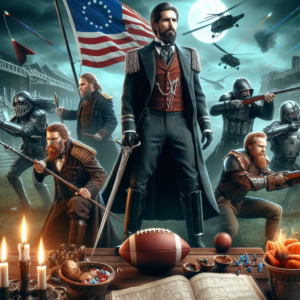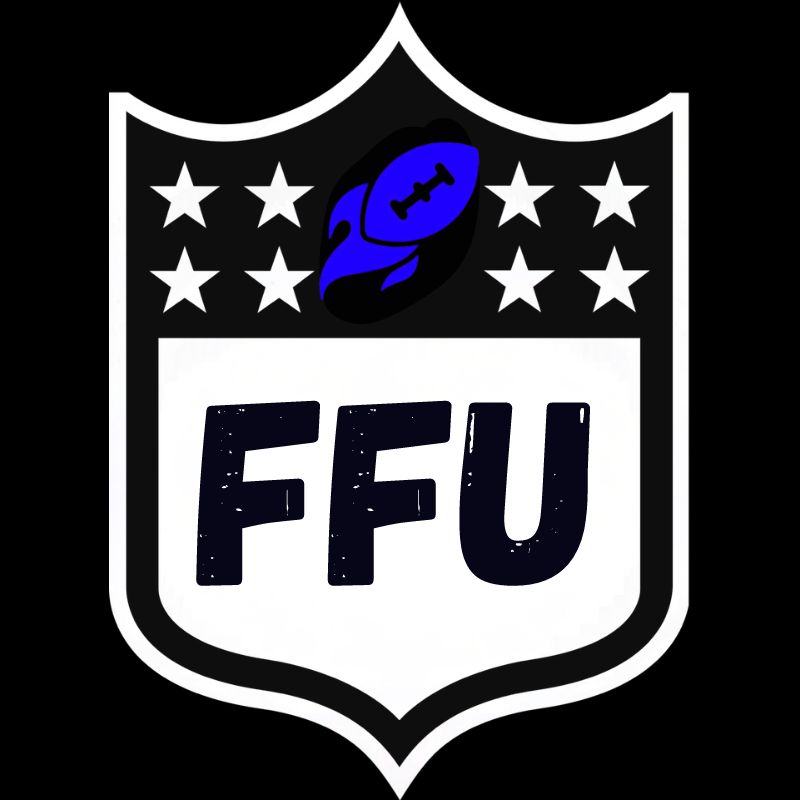For the general public, a standard fantasy football league suffices. If you’re reading this article, you may have grown weary of normal leagues and would like to try something new. Crash Course, a Fantasy Football Universe series, delves into unique formats. So, let’s start with PPRfect Harmony: Navigating PPR vs Non-PPR League.

How Does it Work?
This isn’t a league type, instead, it’s a format change inside of a normal league. There are different variations of this which depend on how creative you choose to get. This can be as simple as just changing the points for a reception from 0 to 0.5 or as extreme as including different point value tiers for each position. We have a separate Crash Course for those elaborate Tiered PPR Leagues if you are playing in that format, so this article will focus strictly on the differences between Non-PPR and Full PPR.
How is it different?
Again, the difference is straightforward. In a Non-PPR league, each player receives no points for a catch and instead only receives points for receiving yards and touchdowns. In a Full-PPR league, each player receives one fantasy point for a catch in addition to points for receiving yards and touchdowns.
Who does the Draft work?
Since this isn’t a league change and is instead a format change, there is no change to the actual draft itself. The league can still be a dynasty or redraft and is completely open to personal preference.
While the draft itself doesn’t change when going back and forth between Non-PPR and Full-PPR, the difference comes in the way the draft plays out. This change in scoring has a massive impact on which positions are the most valuable. In Non-PPR, the running backs are the most valuable, with a heavy emphasis on the traditional high-carry backs like Derrick Henry. In this format, the receivers who rack up high yardage and touchdown totals are also significantly more valuable than the receivers who are target hogs.
When we talk about full-PPR leagues, the equation changes completely. Suddenly wide receivers are the most important position with a heavy emphasis on high-volume players such as Diontae Johnson. Running backs who are dual threats and catch lots of passes like Christian McCaffrey also become a critical player in a draft.
A look at the Rosters
Rosters are open to league preference and depend on the league type itself. This scoring format change does not change the rosters themselves, but it can change the composition of your rosters.
In Non-PPR many teams are heavy on running backs and choose to punt receiver, while a Full-PPR roster is far more receiver-heavy with many teams choosing to employ the Hero-RB approach.
How does the Waiver Wire work?
As always, the waiver wire settings are a matter of personal preference and vary depending on the league. Much like with the roster makeup, the waiver wires tend to favor one position over the other. In Non-PPR, it will be nearly impossible to get a solid running back on the waiver wire, while in Full-PPR pass-catchers are very rarely available.
How the scoring works
The only difference in the scoring is about how receptions are scored. As I said before, in Non-PPR leagues, your players don’t get points for a catch, while in Full-PPR they get one point for a catch.
This is how it works in standard Non-PPR and Full-PPR leagues, head over to our Tiered PPR Crash Course article if you need advice for more complex PPR alterations.
The Consensus Strategy for Non-PPR
- Prioritize Volume RBs: This one is simple. Draft as many Bellcow running backs as you can. They are a critical commodity and are irreplaceable. This style of scoring will look like most of the draft boards we saw in fantasy five years ago, the first round will be mostly running backs with only the best of the best at receiver cracking the top 12.
- Draft Receivers with Yards and TD Upside: Since the reception numbers don’t matter, not all receivers are created the same. A receiver with 100 catches and 1,000 yards for 5 touchdowns is nice but with no reception bonus, a receiver with 70 catches can be more valuable if he also racks up 1,300 yards and 10 touchdowns. Avoid volume receivers and aim for high-upside ones instead.
- Punt WR: This is a great place to go Hero-WR or Punt WR altogether. The volume receivers simply have a nerfed value. Once the elite yardage and touchdown producers are gone, the rest of them are all easily replaceable.
The Consensus Strategy for Full-PPR
- Prioritize Volume WRs: It’s the exact opposite strategy for Full-PPR. The volume receivers we were avoiding in Non-PPR have suddenly moved up a handful of rounds and are infinitely more valuable. The typical first round in this scoring format consists of Christian McCaffrey and ten receivers with the occasional Bijan Robinson pick finding its way into Round 1.
- Draft Running Backs with Receiving Upside: There is a reason why McCaffrey is a top-3 pick even in this receiver-friendly format. It’s because he is a running back and receiver combined. In this format, that’s the type of running back you want to target. Most of them won’t have McCaffrey’s upside but if you can find a moderate carry workload with a solid target percentage, they are very valuable. This is the format that kept a handful of Patriot’s running backs fantasy relevant for years. I’m looking at you, James White.
- Punt RB: Hero-RB is a great strategy in this scoring format. Get yourself one of the elite dual-threat running backs and then punt the position in favor of stockpiling wide receivers with high target volume.
In Closing
This scoring difference is one of the most important things to check in your settings before starting a draft. The subtle difference will have a massive impact on which positions are targeted early and which are punted.
I chose to play in 1/2 PPR leagues wherever possible as I like to have all positions as balanced as possible. This is also why I play mostly in superflex leagues with a heavy tight-end premium. This allows all four fantasy-relevant positions to be as equal as possible and leaves managers with the option to build their team how they see fit. Going Non-PPR or Full-PPR simply forces an arms race with everyone trying to load up on the same position.
Don’t forget to check out the rest of the Crash Course Series.

